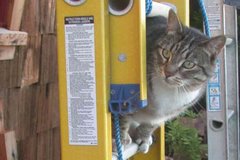2016.11.21
Last Night on the R/V Tangaroa
We are in the throes of the last moments of our cruise. Our coring team started the day by describing our final core of the cruise, followed by a scrubbing of the shipping container we called our laboratory for the past two weeks. We packed up all the remaining samples and conducted a white glove test. All samples have been entered in to the proper databases for the officials from New Zealand that concern themselves with these matters. There is a very strict accountability for all samples collected while aboard the cruise and it is vitally important (perhaps litigiously) to have these databases and samples in perfect order.
We have been working diligently to prepare the cruise report and materials for a press release to be presented at NIWA tomorrow. Drs. Barnes and Howarth will be interviewed by the press following their presentations on the science. The cruise report summarizes the scope of this project, our preliminary findings, and potential future research prospects.
We initially set out to collect data in the hopes of developing an earthquake chronology for prehistoric subduction zone ruptures. To this end will require a number of collaborative efforts with a range of topics that will include sediment routing studies, provenance analyses, physical sedimentology studies, radiometric age analyses, and tephra studies (including chronology). While aboard the R/V Tangaroa, there was an earthquake with a magnitude of M 7.8 that triggered slip on multiple fault systems (at least 5 other faults have been documented to have ruptured to the surface). This earthquake series is interesting in many ways and I will write more on this later on my earthquake blog at earthjay.com. Needless to say, there was impetus to modify our science plans in response to this large earthquake. This was obvious to all on board. There was also interest from NIWA and GNS to respond
to the earthquake in some way.
For the earthquake response, we decided to collect additional cores to supplement cores that already existed and to supplement cores that we had planned to collect. We also decided to collect shallow seismic data and multibeam bathymetric data to search for submarine surface rupture of the fault(s) involved in this complex earthquake.
I will present some of our initial findings after our press release tomorrow. People with telepathic abilities may be able to tell what I will post about. People without telepathic abilities might also forecast what my post may include.
It has truly been a pleasure and an honor to be at sea with this fine science crew. I have learned lots from them and I hope this has been mutual. We have lots of work to do to in the next few years, but I look forward to this with enthusiasm. I include a photo of the science crew above, as well as a map showing the core sites for the 61 cores we collected. I will post the cruise report when it is completed.
For the map, I include several inset figures. In the upper left corner is a map showing the recent seismicity in this region as produced by Geonet and posted to Twitter. In the upper right corner is a map showing the general tectonic setting as presented by AGU on one of their blogs. In the lower right corner is a map prepared by GNS that shows (a) the InSAR based estimates of deformation, (b) the faults in the region, and (c) the areas that have been observed to have surface rupture. This GNS map was also posted to Twitter.
Monday, November 21, 2016
Subscribe to:
Post Comments (Atom)




No comments:
Post a Comment